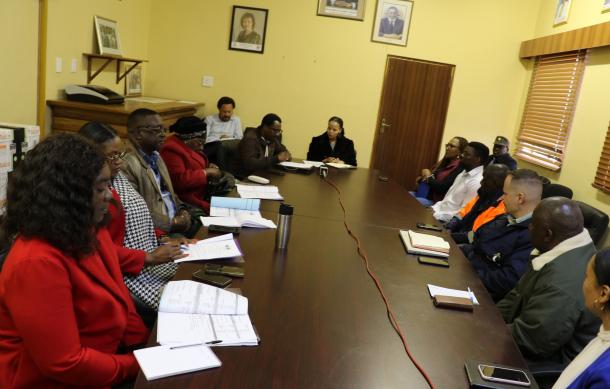
The service reliability of TransNamib has been significantly affected by ageing and unreliable rolling stock.
Bertus Eksteen, TransNamib's Executive for Engineering and Technical Services, revealed this during a meeting with the Standing Committee on Economics and Public Accounts in Keetmanshoop.
For its daily freight operations, the state-owned railway utility necessitates a total of 34 locomotives. Typically, there are around 20 to 26 locomotives operational on any given day.
Additionally, due to the unreliability of its decades-old rolling stock, the railway utility has temporarily halted passenger train services.
"This creates for us a huge problem in the sense that our clients do not have confidence in us, and if we suffer delays due to breakdowns, that obviously also corrodes our relationship with our clients, which puts a huge strain on our reliability, or I should say corrodes away our reliability. Another issue that contributes to the reliability of the old locomotives is their age, even in spite of the fact that they are old and not reliable. Procuring their parts is very difficult. If a part is ordered today, it can take anything between 6 and 12 months to get that part."
Eksteen says the railway utility cannot stockpile spare parts for maintenance and repair due to a lack of funding.
The railway operator, says Eksteen, needs to procure new rolling stock to ensure efficient and effective freight and passenger service delivery.
"We will procure between 20 and 25 new locomotives and remanufacture 10 of our old locomotives to be able to meet the volume projections moving forward and to become financially viable once again to break-even and become profitable for our shareholder, and the way to do this is through the DBSA loan we've applied for."
Natangwe Ithete, Chairperson of the Standing Committee, in response to the TransNamib management's presentation on the state of affairs of the railway operator, had this to say: "TransNamib is always one of the institutions that is underfunded; I don't know why, but it has opened our eyes, and it will continue to brighten our eyes when we go to the site and understand. When we go back to the Parliament to fight for an increase because we have realised the importance of the rail network, we will be left behind if we are not to improve the rail network. Due to a lack of funds, you can't do much."
TransNamib currently moves around 1.5 million tonnes of cargo per annum.





